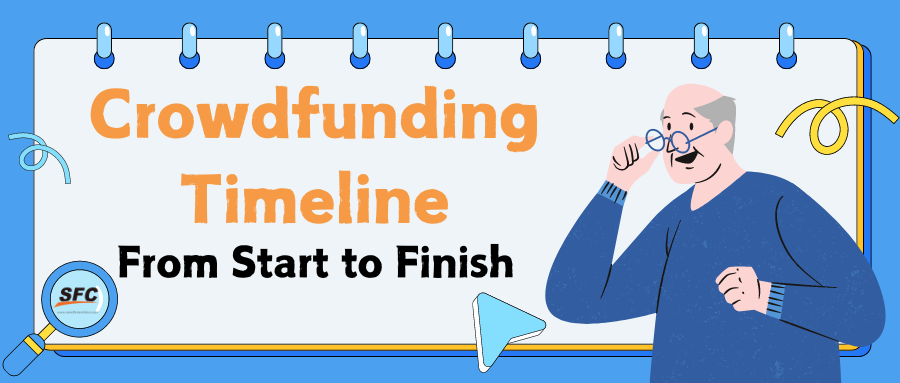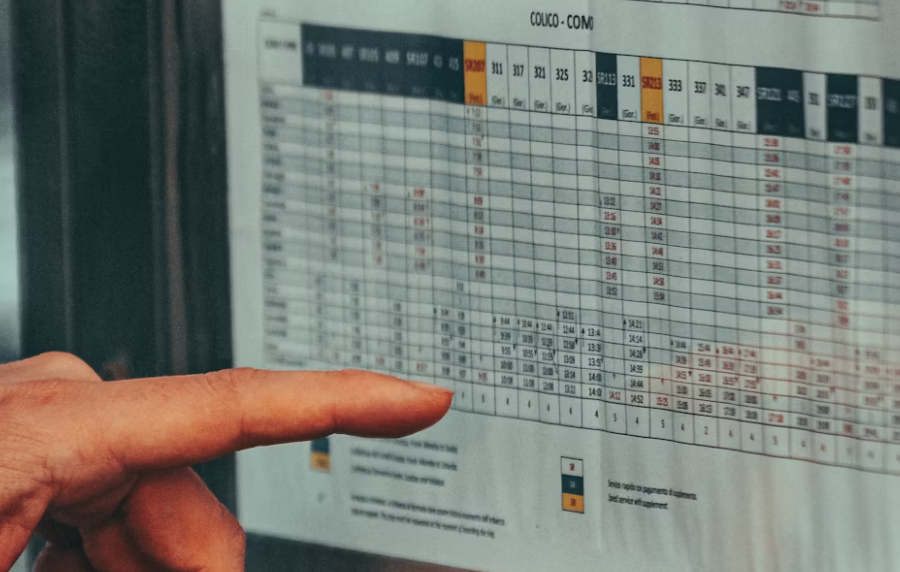Table of Contents
Understanding Crowdfunding Timeline from Start to Finish
Time: Sep 18,2024 Author: SFC Source: www.sendfromchina.com
Crowdfunding is an exciting way to bring ideas to life, whether you're launching a new product, creating art, or supporting a cause. However, pulling off a successful crowdfunding campaign requires more than just a great idea and enthusiasm. You need a well-thought-out timeline that covers every phase—from pre-launch planning to post-campaign activities.
In this guide, we'll walk you through each step of the crowdfunding process and provide insights to help you hit your goals. Let’s break it down!

1. Research and Preparation (4-6 Weeks Before Launch)
Before even thinking about launching your campaign, take time to research. The phase is all about gathering information, setting goals, and creating a roadmap for success.
Key Steps:
- Identify Your Funding Goal: Figure out how much money you need to raise. Remember to include fees (platform fees, payment processing fees) and production costs if you’re delivering a product.
- Choose a Crowdfunding Platform: Kickstarter, Indiegogo, GoFundMe, and Patreon are popular platforms, each with its own audience and fee structure. Choose the one that fits your project.
- Study Successful Campaigns: Look at campaigns similar to yours. What worked for them? What didn’t?
- Build Your Team: If you’re flying solo, great. If not, get your team together early. Designate tasks like content creation, social media management, or outreach.
It is also the time to craft a compelling story. People support crowdfunding campaigns not just because of the idea but because of the people behind them. Share why your project matters and why people should care.
2. Pre-Launch (2-4 Weeks Before Launch)

Once you’ve done your research, it’s time to prepare for the launch itself and focus on building awareness and generating buzz.
Key Steps:
- Create a Marketing Plan: It includes social media posts, email newsletters, and teaser content. Consistent promotion is essential to drive awareness.
- Build a Landing Page or Website: Use this to capture email addresses of interested people. These early supporters are your first line of backers.
- Create Visual and Written Content: High-quality visuals (images, videos, infographics) and clear, compelling text can make or break a campaign. Show off prototypes, sketches, or demos.
- Engage Your Community: Build relationships with your audience through social media, email updates, and direct messages. Get your friends, family, and close supporters ready to back your project on day one.
Your goal during the pre-launch phase is to gather a community of potential backers so that when you hit launch day, you’re not starting from zero.
3. Campaign Launch (Day 1)

The day has arrived! Launching your crowdfunding campaign is an exciting moment, but you’re not done yet. In fact, the first 48 hours are critical for your campaign's success.
Key Steps:
- Announce Your Launch: Blast your email list and social media followers with the news. Make sure you post across all your social platforms.
- Engage Early Backers: Reach out to your closest contacts to get those first donations or contributions rolling in. The initial momentum is vital.
- Monitor the Campaign: Keep a close eye on how your campaign performs in the first two days. Adjust your messaging or promotional tactics if necessary.
It’s common for successful campaigns to receive a significant portion of their funding within the first 48 hours. Early success helps build credibility, making it easier to attract more backers.
4. Mid-Campaign Momentum (Weeks 1-4)

After the initial surge, you may notice the campaign slowing down. However, you must maintain the momentum to ensure you meet your goal.
Key Steps:
- Regular Updates: Keep your backers engaged with updates about your project’s progress. Share milestones, challenges, and exciting developments.
- Incentivize Sharing: Create referral rewards for your backers to share your campaign with others. Offer perks or exclusive updates.
- Collaborate with Influencers or Media: Reach out to bloggers, YouTubers, and influencers in your niche. A feature from a popular content creator can boost your campaign's visibility.
The mid-campaign period is all about staying active. Continue to communicate and engage with your backers so that your campaign doesn’t lose steam.
5. Final Push (Final 3-5 Days)
As you approach the final days of your campaign, it’s time to ramp up your efforts and push for the finish line.
Key Steps:
- Countdown Promotions: Create urgency by counting down the final days. Post frequent updates reminding people of how much time is left to contribute.
- Exclusive Rewards: Offer last-minute perks for those who donate before the campaign ends. It could include limited-edition products or experiences.
- Engage with Your Backers: Encourage your existing backers to share the campaign with their networks one last time. A final push from your community can help you reach your goal.
Most campaigns see a spike in contributions during the last 48-72 hours. Make sure you’re active, visible, and enthusiastic as you head into the final stretch.
6. Post-Campaign (Weeks After Completion)
Whether you’ve hit your funding goal or not, the work doesn’t end when your campaign closes. Now it’s time to focus on delivering on your promises and maintaining relationships with your backers.
Key Steps:
- Thank Your Backers: Send personalized thank-you notes or emails. Let them know how much their support means to you.
- Deliver Rewards: If you promised rewards, be sure to deliver them in a timely manner. Communicate clearly with your backers about when they can expect their rewards.
- Update Backers Regularly: Even after the campaign ends, keep your backers informed about the progress of your project. If you’re delivering a product, share manufacturing updates, shipping timelines, and any potential delays.
Post-campaign follow-ups are crucial for maintaining trust and keeping your community engaged. Who knows, they might be the first to support your next big idea!
7. Small Tips for Crowdfunding Success
Set Realistic Goals: Aim for a funding target that covers your expenses but isn't overly ambitious.Use High-Quality Visuals: Videos and images are key to drawing for potential backers. A great project video can make all the difference.
Leverage Your Network: Your friends, family, and colleagues are your first backers. Don’t hesitate to ask for support early on.
Engage Throughout the Process: Successful crowdfunding campaigns are the ones that consistently engage backers and provide frequent updates.
8. FAQs
1. How much time should I dedicate to planning my crowdfunding campaign?
Ideally, you should dedicate at least 4-6 weeks to planning before your campaign goes live. This gives you enough time to research, build your community, and create content.
2. What’s the most important aspect of a crowdfunding campaign?
The story you tell is crucial. Backers want to know who you are and why your project matters. A clear, compelling narrative paired with a realistic funding goal is key to success.
3. What happens if I don’t reach my funding goal?
It depends on the platform. Some platforms like Kickstarter operate on an "all-or-nothing" model, meaning you won't receive any funds unless you hit your target. Others, like Indiegogo, allow you to keep whatever funds you raise.
 Post Views:4217
Post Views:4217
Copyright statement: The copyright of this article belongs to the original author. Please indicate the source for reprinting.
Previous Post
What Is Smart Warehousing? Definition & Technology
Next Post
TAGS
Hot Research
Get a Custom China Fulfillment Solution with FREE Storage for 30 Days
 Want to know about our services, fees or receive a custom quote?
Want to know about our services, fees or receive a custom quote?
 Please fill out the form on the right and we will get back to you within a business day.
Please fill out the form on the right and we will get back to you within a business day.
 The more information you provide, the better our initial response
will be.
The more information you provide, the better our initial response
will be.





 TAGS:
TAGS: